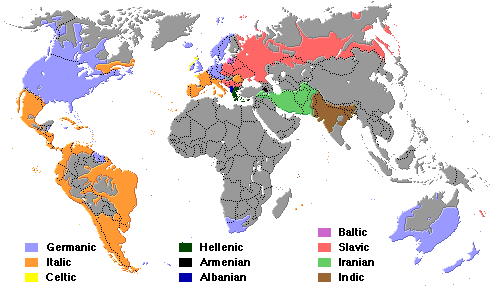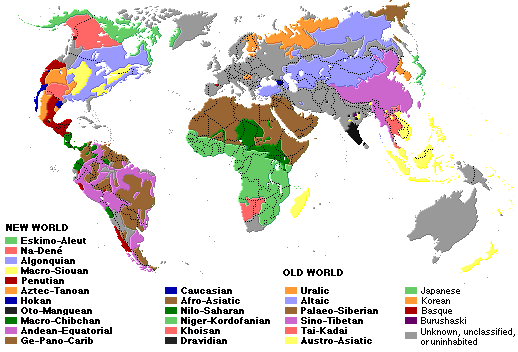


New World families are based on the maps found in the Cambridge Encyclopedia of Language, which says that they represent contemporary (not, say, pre-Columbian) language usage. I am a bit skeptical about this; there's probably a lot more Chinese spoken in Ohio than Algonquian. Compare to the Indo-European map to see where Spanish, English, French, and Portuguese are not spoken. Also be aware that many of these classifications are still quite controversial.
Old World families are based on the Oxford World Atlas and other sources, but attempt to use the same categories as in Scott DeLancey's classification for the FAQ.
Dividing the world's languages into two maps allows us to indicate some of the overlapping language areas of the world (e.g. Altaic and Indo-European in Siberia), but non-IE languages overlap too; a particularly mottled area is Southeast Asia.
There are many New Guinean language families; some linguists group them all together as "Papuan" but this too is controversial. There are 26 families of Australian languages; the largest is Pama-Nyungan.